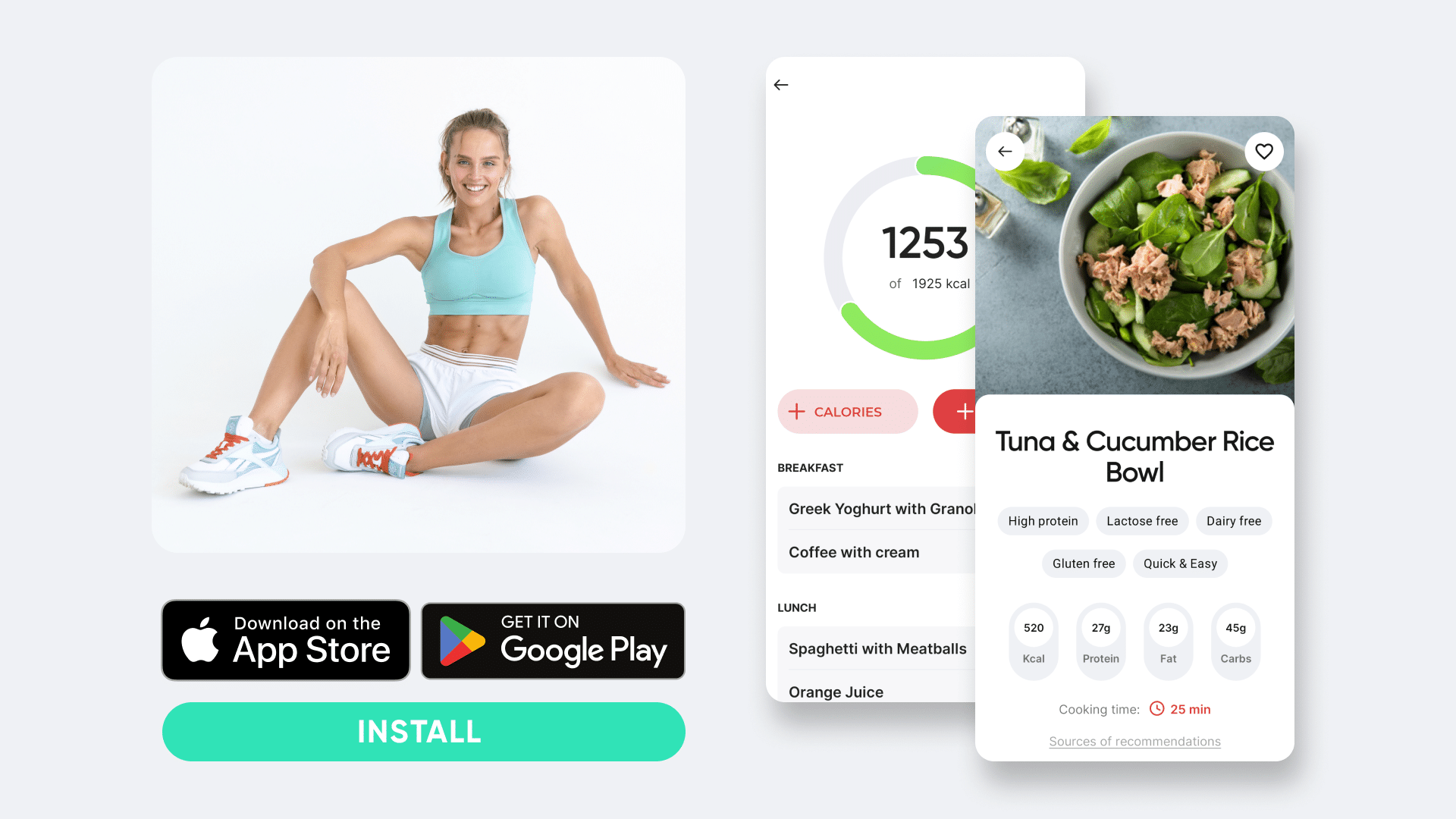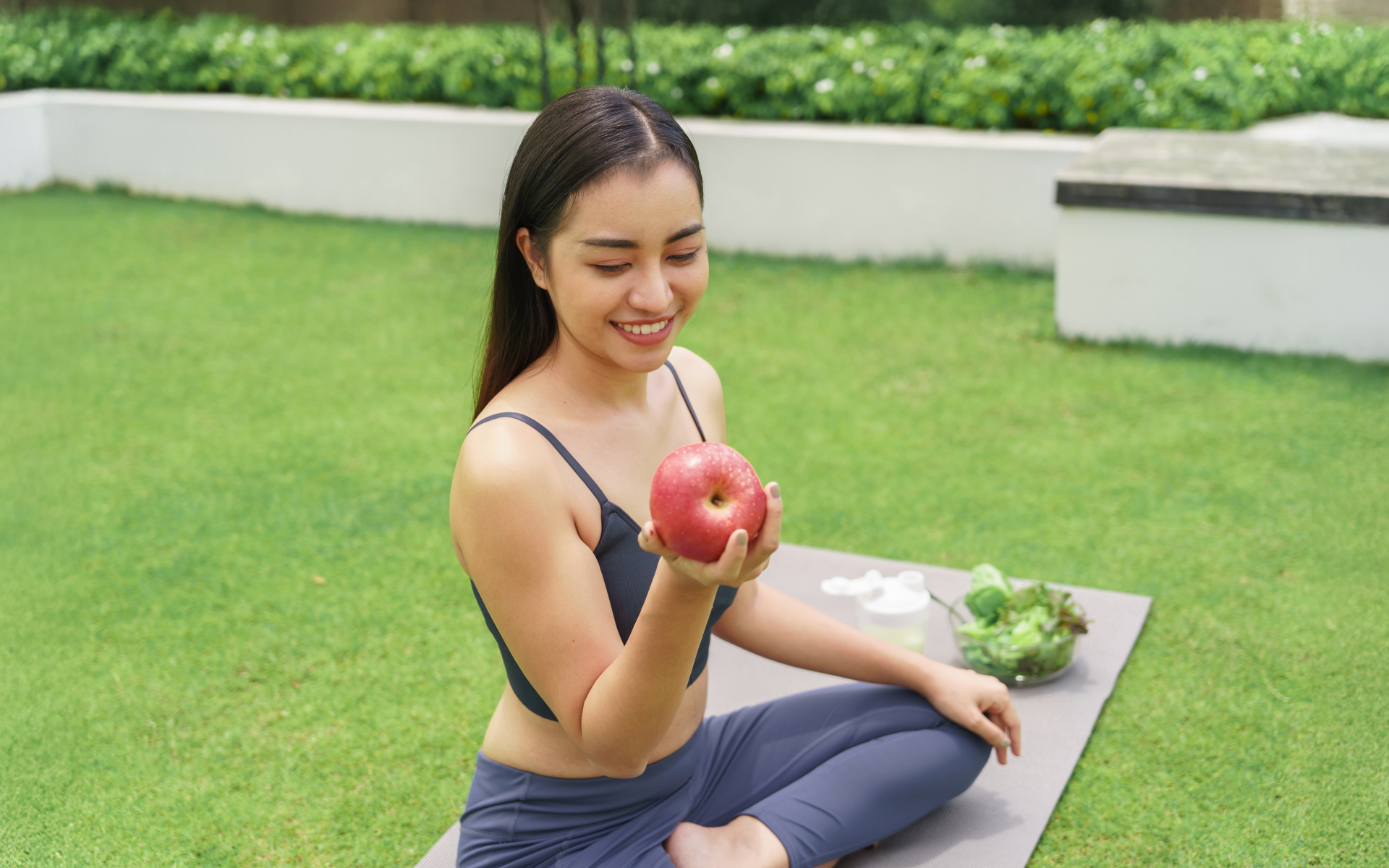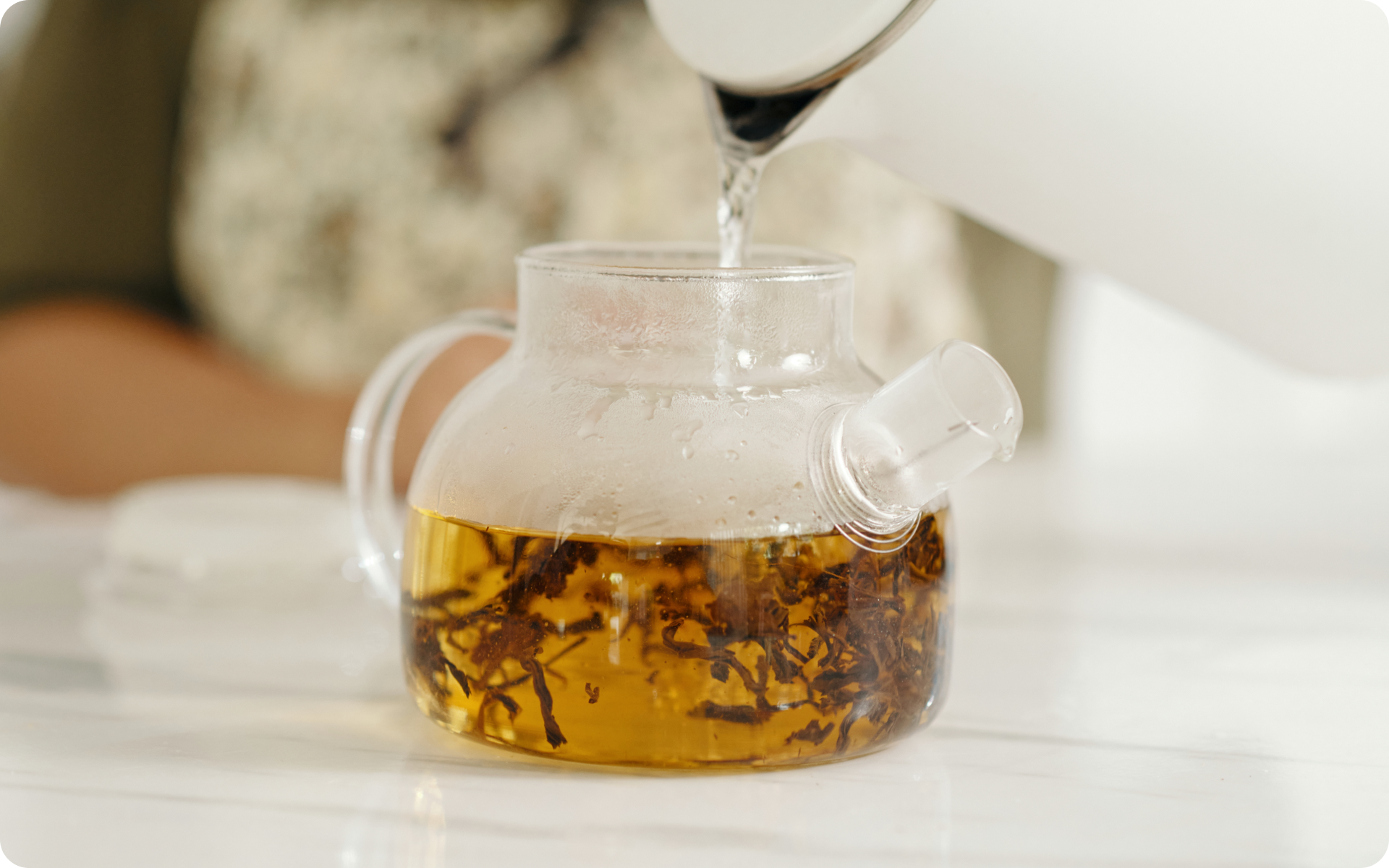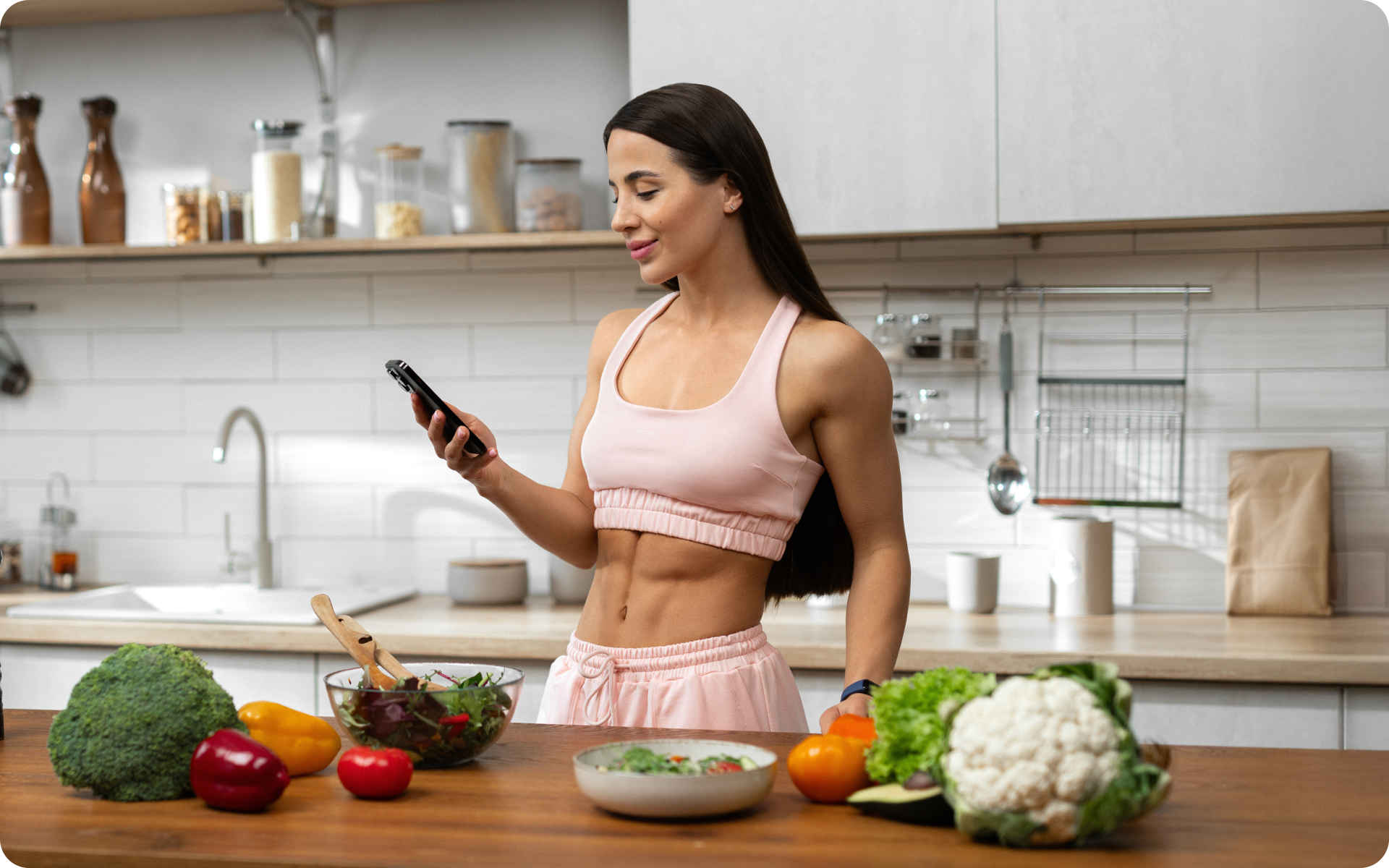Bulking is a term that is used to describe the process of gaining weight for the ultimate purpose of increasing muscle mass and getting stronger. You may find this word being most commonly used in the gym world and bodybuilding space. Typically, bulking is done during the ‘off-season’ for bodybuilders to gain body mass (1). Although there is actually not much established evidence for bodybuilders to work with during the off-season, there are some guidelines that can ensure a bulking diet is done efficiently and safely. When bulking, the main mechanism is that enough energy is consumed per day to put the body in an energy surplus. Consuming an energy surplus, or in other words, more calories than your body requires, ultimately leads to weight gain. The goal during this phase is to build muscle while avoiding excess fat gain. Continue reading to learn key concepts and vital details to optimize a muscle-building meal plan.
What Are the Best Bulking Snacks?
What the best snacks for muscle bulking are will depend on your overall diet plan and individual goals, requirements, and preferences. However, choosing snacks that are higher in energy can be an effective means of supporting the bulking phase. It’s suggested that eating a calorie surplus of about 10-20% is optimal when you want to gain weight effectively (1).
When bulking, the goal is to consume high-calorie, nutrient-dense snacks that support muscle growth and recovery. Calorie-dense snacks such as nuts, protein bars, trail mix, Greek yogurt, or dairy-free yogurt products are easy options to increase your daily energy intake. By tailoring your snack choices to suit your daily routine, whether at school, on the go, or around workouts, you can meet your bulking goals while maintaining a balanced, healthy, and enjoyable diet.
Here are some examples divided into different categories:
Bulking Snacks for School:
- Portable and easy-to-eat options:
-
- Protein bars
- Mixed nuts and dried fruits
- Greek yogurt in small containers
- Rice cakes with peanut butter
- Energy or protein balls
On-the-Go Bulking Snacks:
- Convenient and high-calorie options:
- Trail mix
- Yogurt and berries
- Pre-packaged protein shakes
- Muesli bars
Pre- and Post-Workout Snacks:
- Pre-workout:
-
-
- Banana with almond butter
- Oats with berries and chia seeds
- Rice cakes with peanut butter
-
- Post-workout:
-
- Protein shake with whey or plant-based protein, banana, and almond milk
- Cottage cheese with honey and granola
- Greek yogurt with mixed nuts and chia seeds
Lean and toned up body isn’t just a far-fetched fantasy. Check out the BetterMe: Health Coaching app and watch it propel your weight loss journey into high gear!
What Is Good Food for Bulking?
Typically, high-calorie foods are suggested for bulking. However, if you want to fully optimize your progress and health, there are some key details to focus on. While an energy surplus is a key factor for promoting muscle growth and weight gain, diving deeper into specific nutrients such as macronutrients and their composition will further enhance your progress, performance, and well-being. The three main macronutrients, protein, carbohydrates, and fat, have essential functions regardless of your individual goals. However, ensuring they are consumed in optimal distributions can help accelerate your progress. Protein intake should be sufficient, ranging from 1.6-2.2 g/kg per day, with each meal containing 0.40-0.55 g/kg spread across 3-6 meals a day, including within 1-2 hours before and after a workout. Fat intake should be moderate, at 0.5-1.5 g/kg per day, and the remaining calories should come from carbohydrates, ensuring an intake of at least 3-5 g/kg per day to meet the energy demands of resistance training. Supplements such as creatine monohydrate (3-5 g/day), caffeine (5-6 mg/kg), beta-alanine (3-5 g/day), and citrulline malate (8 g/day) may also provide performance benefits for bodybuilders. All dietary preferences can still be catered for and building muscle on diets such as a plant-based diet now has more than enough evidence to support its efficiency. Furthermore, it’s important to note that consuming protein in excess won’t provide any additional advantage or speed up results for muscle gain. Consuming all macronutrients in optimal amounts is the key to a successful bulk and optimizing health and performance (2).
Some food examples include:
Protein Foods
Omnivorous:
- Chicken breast
- Turkey breast
- Lean beef
- Salmon, tuna, or other fish
- Eggs
- Greek yogurt
- Cottage cheese
- Milk
Vegetarian:
- Greek yogurt
- Cottage cheese
- Eggs
- Cheese (e.g., mozzarella, cheddar)
- Milk
Vegan/Plant-Based:
- Tofu
- Tempeh
- Lentils
- Chickpeas
- Seitan
- Edamame
- Mock meat products
- Plant-based protein powders
Read more: 20 Low-Calorie, High-Protein Snacks to Enjoy
Carbohydrate Foods
Whole Grains:
- Brown rice
- Quinoa
- Oats
- Whole-wheat pasta
- Farro
- Buckwheat
- Barley
Starchy Vegetables:
- Sweet potatoes
- White potatoes
- Butternut squash
- Corn
- Beets
Legumes:
- Lentils
- Black beans
- Kidney beans
- Chickpeas
- Green peas
Fruits:
- Bananas
- Apples
- Oranges
- Berries
- Grapes
Bulking Snacks: Healthy Fat Sources
- Avocados
- Olive oil
- Almonds, walnuts, cashews
- Natural peanut butter, almond butter
- Avocados
- Almonds, walnuts, cashews
- Chia seeds, flaxseeds, pumpkin seeds
Looking for a way to break the vicious cycle of weight loss and tone up all the jiggly parts? Watch the extra pounds fly off and your muscles firm up with the BetterMe: Health Coaching app!
Example Meals Using These Foods:
Omnivorous Meal Examples:
Breakfast:
- Scrambled eggs with whole-grain toast and avocado
- Overnight oats with milk, fruit, natural nut butter
- Omelet with mushrooms, tomatoes, and spinach, served with a side of whole-grain toast and a drizzle of olive oil
- Avocado on whole-grain toast with sauteed spinach, mushrooms, and tomato with a protein shake and coffee.
- Protein smoothie with oatmeal, protein powder, cacao powder, ground flaxseed, choice of milk and banana.
Lunch and Dinner:
- Grilled chicken breast with brown rice and steamed broccoli
- Baked salmon with quinoa and roasted sweet potatoes
- Black bean burrito with avocado, salsa, and brown rice in a whole-wheat wrap
Vegetarian Meal Examples:
Breakfast:
- Greek yogurt with oats, berries, and chia seeds
- Overnight oats with milk, fruit, natural nut butter
- Omelet with mushrooms, tomatoes, and spinach, served with a side of whole-grain toast and a drizzle of olive oil
- Avocado on whole-grain toast with sauteed spinach, mushrooms, and tomato with a protein shake and coffee.
- Protein smoothie with oatmeal, protein powder, cacao powder, ground flaxseed, choice of milk and banana.
Lunch and Dinner:
- Lentil soup with whole-grain bread and cheese
- Stir-fry tofu with brown rice and mixed vegetables
- Vegetarian chili made with kidney beans, black beans, diced tomatoes, and corn, served with brown rice
Vegan/Plant-Based Meal Examples:
Breakfast:
- Overnight oats with almond milk, ground flaxseed or chia seeds, blueberries, cacao powder, protein powder, natural peanut butter, drizzle of maple syrup.
- Tofu scramble with spinach and whole-grain toast with a coffee and protein shake
- Smoothie bowl made with plant-based protein powder, almond milk, blueberries, cinnamon or cacao powder, ground flaxseed or chia seeds, natural nut butter of your choice
Lunch and Dinner:
- Chickpea salad with quinoa and avocado
- Tempeh stir-fry with brown rice and roasted vegetables
- Black bean burrito with avocado, salsa, and brown rice in a whole-wheat wrap
- Chickpea curry with coconut milk, served over basmati rice with a side of roasted cauliflower
Is It Okay to Snack when Bulking?
Yes, it’s okay to snack when bulking. Snacking when bulking can help increase your overall energy intake, which is essential for gaining weight. Snacking can be an effective way to increase overall food intake throughout the day without having to eat a full meal. Consuming snacks between meals can help distribute calories throughout the day, which supports steady muscle growth and recovery (3). Snacking can be a straightforward approach to bulking by simply adding a few additional snacks between your main meals. This can help add an extra 300 to 500 calories per day, which is a good starting point for gaining weight (3).
Read more: Best Low Sodium Snacks Recommended by Nutritionists
What Are Good Snacks for Bulking?
Good snacks for bulking ultimately depend on your individual goals, needs, and preferences.
Some individuals may want to support their long-term health as best as possible, so their choices may be influenced by underlying reasons or values. The key to snacking while bulking is choosing high-calorie, nutrient-dense options that are aligned with your dietary preferences and goals. Whether you’re looking for plant-based options, high-protein snacks, or quick on-the-go energy boosts, these snack ideas will help you achieve the calorie surplus that is needed to support muscle growth and recovery while bulking.
Here are some high-calorie bulking snacks options that can easily be incorporated into a bulking diet:
- Peanut butter on rice cakes with sliced banana
- Chickpea salad with avocado and quinoa
- Hummus with whole-grain pita bread
- Greek yogurt with honey and mixed nuts
- Oatmeal with almond butter and sliced banana
- Protein shake with whey or plant-based protein, almond milk, and berries
- Dark chocolate (at least 70% cacao)
- Unsalted nuts such as almonds, walnuts, or cashews
- Peanut butter and banana on whole-grain toast
- Protein bars, energy balls, or protein balls
- Protein shakes or smoothies
How Long Should a Bulk Last?
The length of a bulking phase depends on your individual goals and body type. Typically, a healthy rate of weight gain is around 0.25 kg to 0.5 kg per week, particularly during the initial phase. This pace helps minimize fat gain while promoting muscle growth, assuming that all other lifestyle factors like diet, training, and sleep are optimized (3).
However, it’s important to note that as you continue bulking, the rate of muscle gain may slow over time. A bulk should generally last for several months to allow for significant muscle development, but it’s important to reassess your progress periodically.
There are also different approaches to bulking. A ‘clean bulk’ typically focuses on eating nutrient-dense, whole foods to minimize fat gain, while a ‘dirty bulk’ usually involves consuming a large calorie surplus from nutritionally poor foods, such as ultra-processed foods. Clean bulking typically leads to a slower but leaner gain, while dirty bulking may result in faster weight gain but often comes with more fat accumulation.
Regularly reassessing your progress, body composition, and goals can help stay on track and ensure you’re moving in the right direction.
FAQs
Can I eat anything while bulking?
While you can eat ‘anything’ when bulking, if you want to gain weight in a healthy and sustainable manner, there are some considerations. Maintaining a balanced diet and consuming adequate servings of all the key food groups, including lean protein, vegetables, fruit, whole grains, carbohydrates, and healthy fats, is paramount. How you choose to bulk is ultimately up to you, but the food quality and quantity can influence health, well-being, progress, and performance (4,5).
Can I eat chips while bulking?
You can eat chips while bulking. It’s all about making sure your plan is designed with your individual goals, preferences, and requirements in mind. Chips can be a part of any diet, but you must make sure you consider their nutritional value. Paying attention to serving sizes and portions will help support your bulking goals and overall health.
Is banana good for bulking?
Bananas are an excellent source of many essential nutrients, such as potassium, magnesium, and vitamin B6, which are important for overall health and muscle function (6). They are also rich in carbohydrates, which makes them a great energy source for bulking. Bananas are also a great addition to other higher-calorie foods, such as peanut butter, or mixed into protein shakes. This makes them a convenient and suitable option to include in your bulking diet.
Are eggs good for bulking?
Eggs can be a good food to include in your diet. They provide protein and some healthy fats, contributing to overall energy intake. Eggs also contain all nine essential amino acids, which makes them a complete protein source, something that is crucial for muscle-building (7).
Bulking Snacks: The Bottom Line
Bulking is a carefully managed phase for gaining weight primarily through muscle mass, and it plays a significant role in bodybuilding and strength training. By maintaining a calorie surplus and focusing on nutrient-dense foods, you can ensure steady and healthy weight gain while minimizing excess fat accumulation. Snacks are a key part of a bulking diet, helping to bridge gaps between meals and increase overall caloric intake, with high-protein and high-calorie options such as nuts, yogurt, and protein shakes offering valuable fuel for muscle growth and recovery. Whether you’re following an omnivorous, vegetarian, or plant-based diet, there are plenty of ways to meet your macronutrient needs while bulking. From protein-packed meals to energy-boosting snacks, it’s important to tailor your diet based on your goals, preferences, and body type. Monitoring your progress and adjusting as required will help ensure you’re on track to reach your desired muscle gain without excessive fat. Balancing your intake of protein, fats, and carbohydrates, in addition to incorporating supplements such as creatine, can maximize your results. The key to successful bulking is to remain consistent with your dietary approach, whether through clean or dirty bulking, and continually reassess your progress. By including nutrient-dense snacks and meals in your routine, you can achieve your muscle-building goals while supporting overall health and well-being.
DISCLAIMER:
This article is intended for general informational purposes only and does not serve to address individual circumstances. It is not a substitute for professional advice or help and should not be relied on for making any kind of decision-making. Any action taken as a direct or indirect result of the information in this article is entirely at your own risk and is your sole responsibility.
BetterMe, its content staff, and its medical advisors accept no responsibility for inaccuracies, errors, misstatements, inconsistencies, or omissions and specifically disclaim any liability, loss or risk, personal, professional or otherwise, which may be incurred as a consequence, directly or indirectly, of the use and/or application of any content.
You should always seek the advice of your physician or other qualified health provider with any questions you may have regarding a medical condition or your specific situation. Never disregard professional medical advice or delay seeking it because of BetterMe content. If you suspect or think you may have a medical emergency, call your doctor.
SOURCES:
- Nutrition Recommendations for Bodybuilders in the Off-Season: A Narrative Review (2019, nih.gov)
- Weight and muscle gain (12015, betterhealth.vic.gov)
- Increasing Muscle Mass (nd, sportsdietitians.com.au)
- Healthy ways to gain weight (2023, nhs.uk)
- Gaining Weight The Healthy Way (2024,indi.ie)
- Bananas, raw (2018, usda.gov)
- Eggs (2019, usda.gov)









